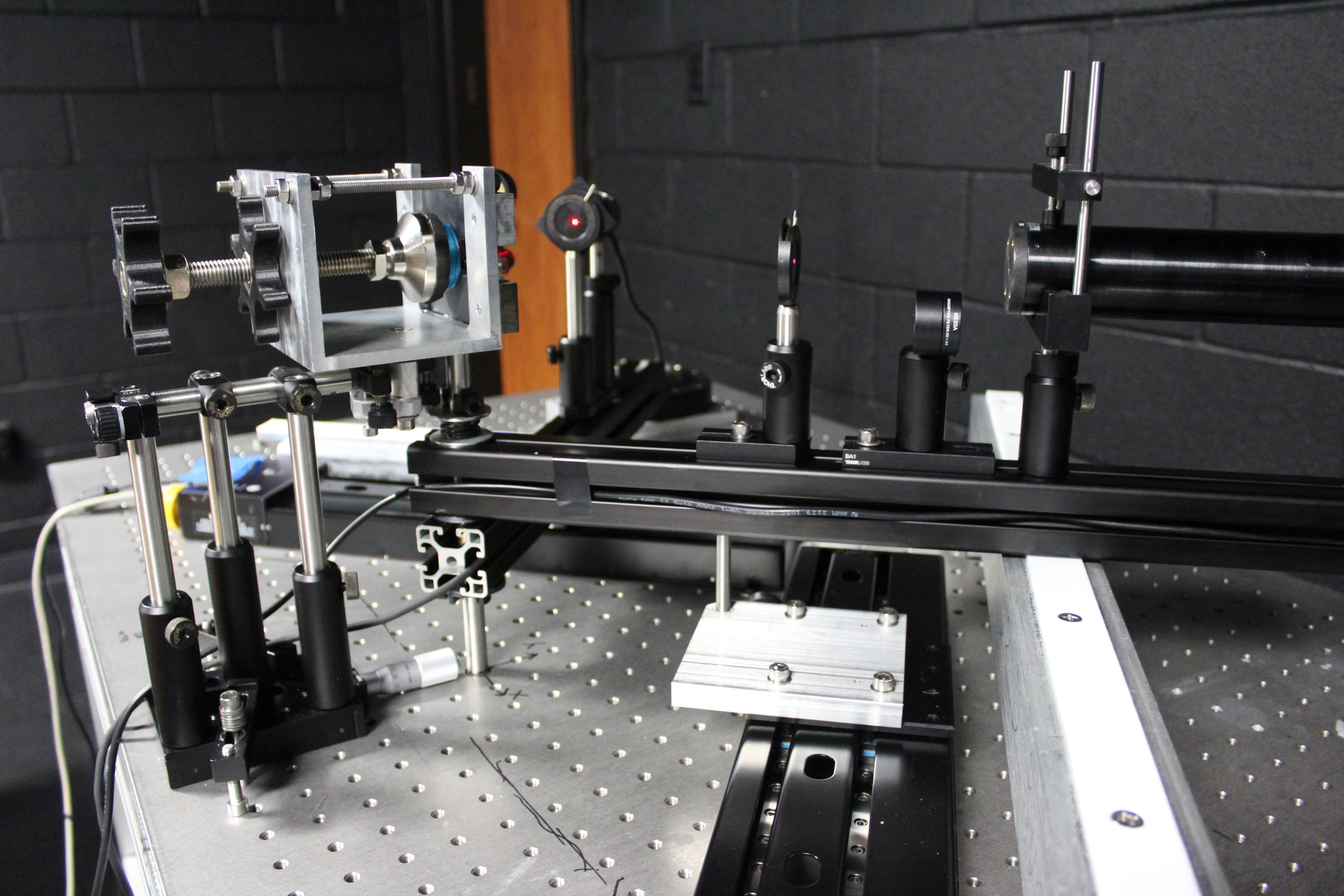Reflectance Measurements of Black and White Materials

We report on a catalog of various black and white materials used in the construction and/or baffling of optical systems and as screen material for calibration systems. Black materials are characterized via total and specular reflectance measurements. White materials are characterized for total reflectance and deviation from a Lambertian surface. Total reflectance is measured over a broad wavelength range (250 < λ< 2500 nm) that is applicable to ultraviolet, visible, and near-infrared instrumentation. Lambertian characterization and specular reflectance are measured using a helium-neon laser and photodiode over a range of angles.
Catalog of black materials and results
Catalog of white materials and results
Total Reflectance is measured using the U-4100 dual beam spectrophotometer.
Our MADLaSR instrument measures the specular reflectivity of black materials and the Lambertian reflectivity of white materials over their full range of incident and observed angles, respectively.
Publications
Reflectivity characterization of various black and white materials
Luke M. Schmidt, Brant Conway, Darren L. DePoy, Jennifer L. Marshall, Ryan J. Oelkers, "," Proc. SPIE 12188, Advances in Optical and Mechanical Technologies for Telescopes and Instrumentation V, 121884W (29 August 2022); https://doi.org/10.1117/12.2630244
(PDF) (Poster)
Characterization of the reflectivity of various black and white materials
Luke M. Schmidt, Lauren N. Aldoroty, Yasin Alam, Leonardo Bush, D. L. DePoy, Matthew Holden, Doyeon Kim, J. L. Marshall, Mason Perkey, Proc. SPIE 11451, Advances in Optical and Mechanical Technologies for Telescopes and Instrumentation IV, 114512S (13 December 2020); https://doi.org/10.1117/12.2562759
(PDF) (Poster)
Characterization of the reflectivity of various black materials II
Schmidt, Luke M.; Gomez, Madelynn; Kim, Doyeon; Torregosa, Michael; Sauseda, Marcus; Prochaska, Travis; DePoy, D. L.; Marshall, J. L.; Gardner, Lawrence; and Grant, Walter. In Proc. SPIE, 10706–195, 2018
(PDF) (Poster)
Characterization of the reflectivity of various white materials
Schmidt, Luke M.; Gomez, Madelynn; Kim, Doyeon; Torregosa, Michael; Sauseda, Marcus; Prochaska, Travis; DePoy, D. L.; Marshall, J. L.; Gardner, Lawrence; and Grant, Walter. In Proc.SPIE, 10706–196, 2018.
(PDF) (Poster)
Characterization of the Reflectivity of Various Black Materials
Marshall, J.L., Williams, P.D., Rheault, J.-P., Prochaska, T., Allen, R.D., DePoy, D.L. 2014, Proc. SPIE, Vol. 9147, 167
(PDF) (Poster)
Labeling of Samples
The original labeling of the metal samples was done using a 3-letter ID system separated by periods. The first letter identifies the metal type (C: cast aluminum, A: 6061 aluminum, I: invar, S: stainless steel). The second letter signifies the initial metal treatment (R: raw, P: Polished, M: machined, B: Bead-Blasted). Finally, the last letter identifies the coating treatment of the sample (B: Black-Dye Anodization, H: Hardcoat Non-Dyed Anodization, N: Electroless Nickel Coating).
Example:
C.R.B : Cast Aluminum, Raw, Black-Dye Anodization
Anodizing:
Black Anodization: MIL-A-8625, Type II, Class 2, Black
Hardcoat Anodization: MIL-A-8625, Type III, Class 1, Non-dyed
Electroless Nickel: MIL-C-26074
Polishing:
Polished samples were prepared by sanding the faces of the samples in increasing grit sizes of 500, 1000, 1500, and 2000.
Thick/Thin Invar: Thick invar refers to regular cast invar and thin invar refers to cold rolled sheet invar.
Our 2018 SPIE papers expanded this naming scheme to include paints, fabric, tape, etc. in subsequent years as the variety of samples has grown we have now adopted simplified labeling where black samples (including previously tested samples) are given a letter and number code, B####, and white materials W####. A cross reference will be made available.
Labsphere SRS-05-100 (calibration certificate link) (data points)
